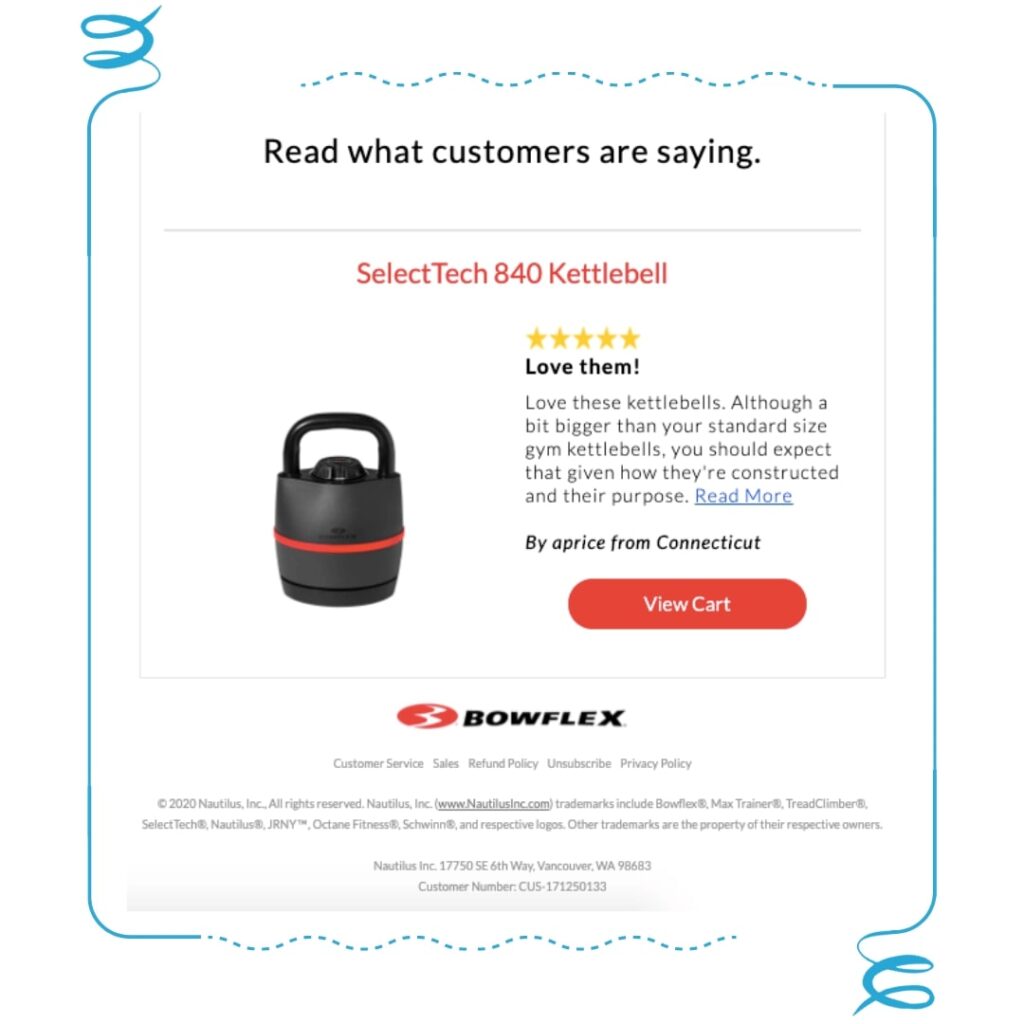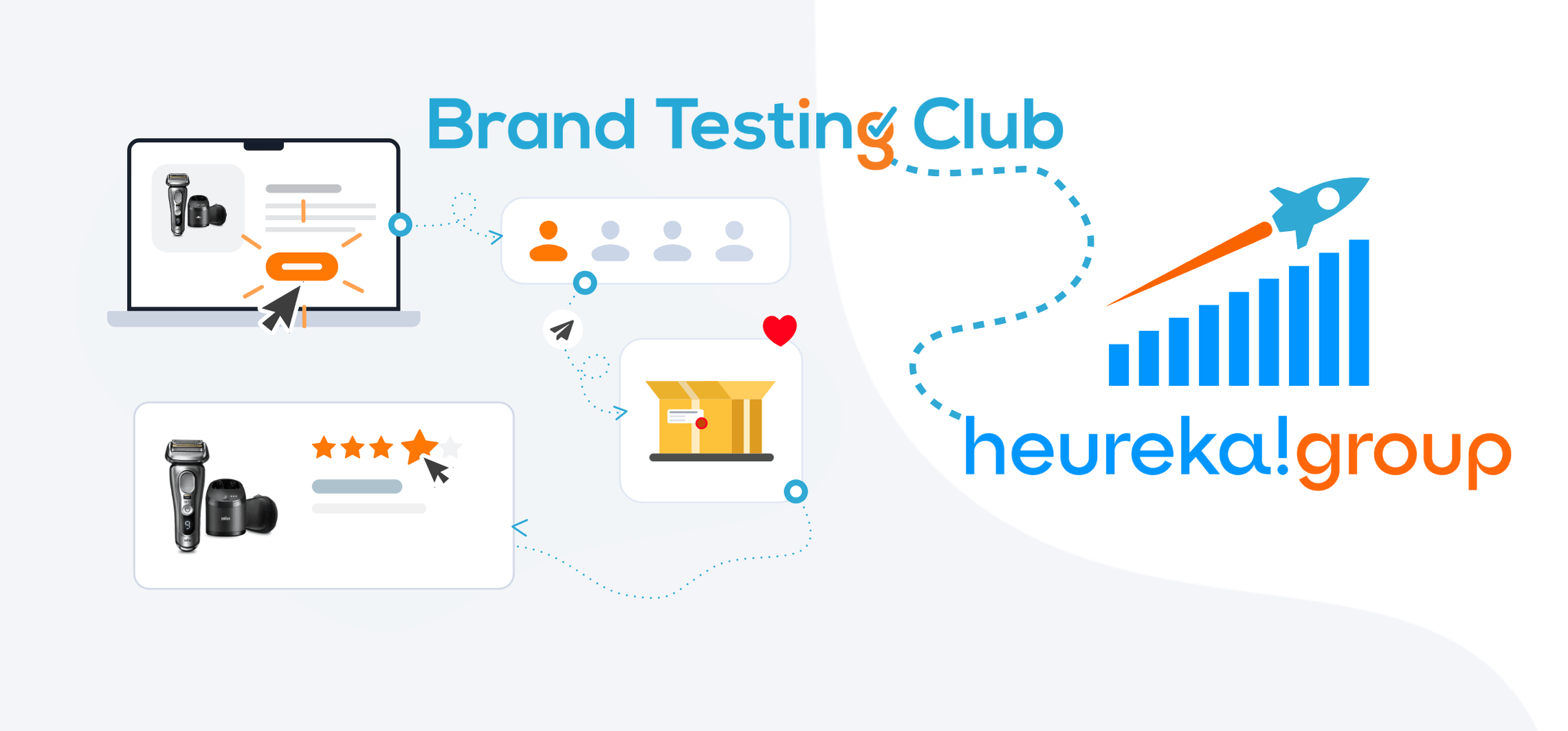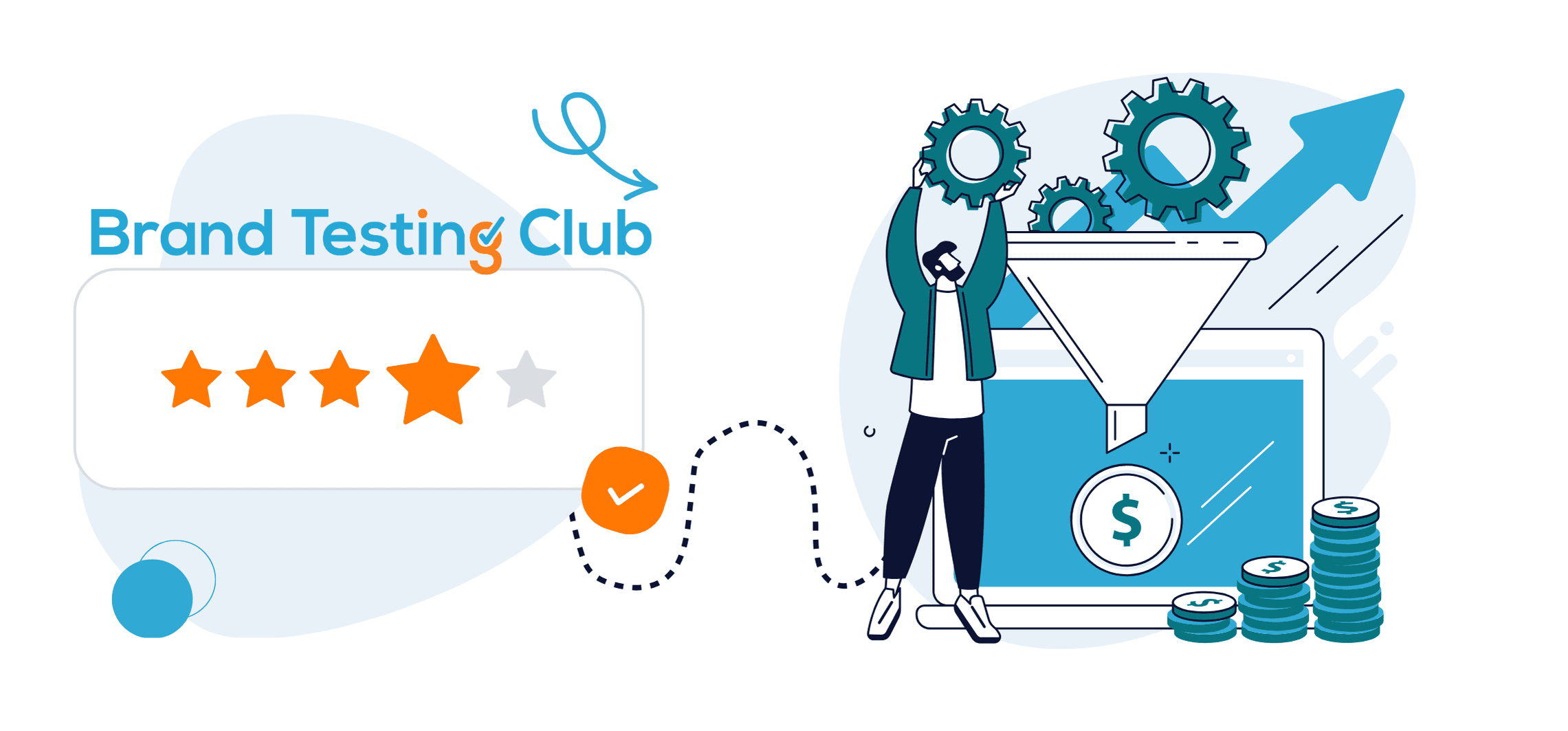Reviews and email marketing are a perfect match, find out why!
Aleš Randa
10 min
Reviews and email marketing is dream team, nothing beats a newsletter with reviews, and post-purchase email is the best way to collect reviews. How do you make the most of it? And what can you do with UGC in emails? More in today's article!
The first email was sent in 1971
It forever changed the way we communicate, and while better platforms have evolved over time, it remains a relevant medium and valuable marketing tool in 2023. Nearly 5 billion people have an active online inbox, and around 306 billion messages are sent between them every day.
This impressive stream of data includes brand content, which brands use to reach and convert customers. They send out newsletters, discount alerts and shopping basket reminders. Email marketing is very popular and definitely has a lot to offer:
- For almost half of brands, it is an essential part of a successful business.
- By the end of 2023, 10 billion euros rolled in across the industry.
- The average ROI of email marketing is an impressive 122%, four times higher than any other digital strategy.
- 86% of people want to receive messages from their favourite brands, with 60% preferring email.
But you're up against strong competition for all these benefits
Email marketing is used by 9 out of 10 marketing teams and at least a third of companies plan to invest more money in it than they do now. 13% of brands send branded content daily, 33% at least once a week and 26% several times a month. Add to this the current crisis of trust, and it's clear that email marketing for profit can't be done halfway.

With email marketing, it's all about the best content that sells
In essence, it's a digital alternative to door-to-door selling - you boldly walk into the recipient's inbox, squeeze in between the others and ask them to believe you, be taken to your website and spend money there. You should be able to see from this idea alone that you can't get away with a conventional communications strategy.
- It all depends on trust. Email is a pretty private place, and there's nothing more annoying than constant spam or annoying subject lines full of exclamation points and scare quotes.
- Content needs to be organic. 96% of people don't trust generic marketing slogans.
- It won't work without personalisation. Especially since 77% of today's buyers only interact with personalised content.
- Originality matters. Email may be a short format, but that makes every word count.Is it catchy? Authentic? Informative? Studies show that you have to engage the reader within 2.5 seconds or they will lose interest and go elsewhere.
As you can see from the points above, while email marketing is effective, it can be difficult to produce its content at the same frequency as others without compromising quality. So, as always, we want to help. And because we specialise in UGC and online reviews, we've come up with an effective strategy for breaking through in this particular area.
UGC and emails are the ideal combination of credibility and conversion potential
In fact, the effect is two-way. Reviews placed within newsletters increase credibility and therefore conversion potential. At the same time, a post-purchase email asking for a review is the best way to get UGC - on average, statistics show that up to 70% of people respond.
Learn how to combine this conversion cycle to get the most out of both practices with the following tips.
Post-purchase emails are an ideal technique for getting quality feedback from customers about the products they have purchased
They are sent after the order has been completed, with a maximum delay of 7 days. The average response rate in this case is 69%, with the potential to increase to 86% if the user makes repeat purchases from you.
What does such an email look like in practice? The format is straightforward - usually a thank you for the purchase and a request to write a review. But it's worth playing around with for maximum effect. The following three brands provide great inspiration.
Completely minimalist message from computer game developer Ubisoft
The banner contains just an eye-catching visual, a short CTA and a thank you.
 Source: The Assassin’s Creed Odyssey team values your opinion! from Ubisoft - Desktop Email View
Source: The Assassin’s Creed Odyssey team values your opinion! from Ubisoft - Desktop Email View
The Massdrop brand decided to make it as easy as possible for respondents.
It placed only a short prompt and interactive stars in the email, where the recipient could simply click on the review and leave in peace.
Alternatively, a CTA with a "Tell us more" prompt could appear after the click, linking to the full review page. This allows customers who write to express their opinion without overwhelming those who are less inclined.
An example of a sophisticated post-purchase email is the creation of the tea company Revolution.
Firstly, it informs recipients that it has run a successful series of tests which have resulted in a high level of positive feedback. They then mention this and offer a discount voucher.
Note that the CTA to write a review does not appear throughout the text. In fact, the invitation is implicit. The brand knows that simply reading other people's opinions motivates 49% of people to write reviews, and that 54% leave reviews just to subjectively become part of the community of testers mentioned.
 Source: Thanks for helping us from Revolution Tea - Desktop Email View | Really Good Emails
Source: Thanks for helping us from Revolution Tea - Desktop Email View | Really Good Emails
How to use the collected reviews in sales emails?
When you have enough content, it's time to take action. UGC will serve the following functions in the emails:
- Provide credibility. People trust the opinions of others up to twelve times more than they trust traditional marketing.
- Speak the recipient's language. By analysing the text, you will quickly build up a complete customer vocabulary.
- They'll remind you of what's important. Buyers often appreciate things about products that you didn't intend, or miss out on your preferred benefits. The only way to find out is through feedback!
- Offer compelling visual content. This will show the products in a natural setting so that everyone can easily visualise them.
- Most importantly, they'll provide an endless stream of inspiration for a truly original message.
To give you an idea of what it's all about in practice, we've collected the work of the other brands we found most interesting.
Create a brand aura through your customers' experiences
Nothing creates a stronger sense of community and social proof than compelling stories about people's experiences with your products. Brands like The Adventurist know this and encourage every form of extreme experience. As a result, you'll regularly receive emails from them that look like this:
 Source: Just a moment... (milled.com)
Source: Just a moment... (milled.com)
At Home knows that it's the opinion of others that sells the most
That's why they don't just send out boring information and exaggerated slogans in sales emails, they simply show what people think about them. The result is an extremely clear and visually appealing interface with a strong message - others love us, you will too.
 Source: Blog Archives - Page 3 of 36 - PowerReviews
Source: Blog Archives - Page 3 of 36 - PowerReviews
Bowflex sells forgotten products through reviews
Adding items to your basket, changing your mind and then not paying is unfortunately a common practice that costs retailers billions of dollars every year. So Bowflex decided to take action and surprisingly found a solution in customer reviews.
If you forget something, you will soon receive an email with a positive review of the product:
 Source: https://www.powerreviews.com/category/blog/page/3/
Source: https://www.powerreviews.com/category/blog/page/3/
The UGC not only serves as an elegant reminder of the unfinished purchase, but also helps to allay any last fears and uncertainties. And if the review information is not enough, the buyer can click through to a separate review page to find out more.
Share testimonials instead of complicated slogans
84% of people trust online reviews as much as they trust the advice of a friend. Include them in an email and you've got a selling point that's far more powerful than anything your copywriter can come up with.
A great example of this is from supplement retailer Jigsaw Health. The tagline dominates the email, which consists of an excerpt from a testimonial by shopper Ann W. A short video takes the recipient through the rest of the testimonial.
 Source: Jigsaw Health: Listen to what happened after taking Jigsaw's MagSoothe for two weeks... | Milled
Source: Jigsaw Health: Listen to what happened after taking Jigsaw's MagSoothe for two weeks... | Milled
After that, it's just classic content with products and CTAs with a discount coupon.
If we were doing the email, we would replace the product photos with posts from other clients to maximise the social proof effect. Still, it's a visually pleasing whole that will sell.

Create a stunning gallery of photos and videos
These can then be placed anywhere in your email to illustrate what you're trying to say. The advantage of UGC is that people take photos of products in normal use, making it easy for anyone to see what they look like in real life.
This is how the Sunday Citizen brand does it, for example:
 Source: Abandoned cart emails: 14 tips & examples from brands (klaviyo.com)
Source: Abandoned cart emails: 14 tips & examples from brands (klaviyo.com)
The individual windows can be either simple photos or interactive links to the authors' social media profiles, where the reader can find out more. The second option is particularly useful if you have a long-term community of testers or influencers. Their profile will quickly become an organic extension of your regular marketing campaign, and can win over even those customers who otherwise despise conventional marketing.
West Elm is also doing a great job with photography.
The company first ran a contest using the hashtag #mywestelm, inviting customers to submit photos of their rugs and carpets. As a result, the brand quickly collected a large amount of content that it now uses whenever it needs to fill a new email template:
 Source: 3 Brilliant Ways to Include User-Generated Content in Email - Email and Landing Page Design
Source: 3 Brilliant Ways to Include User-Generated Content in Email - Email and Landing Page Design
Host your own hashtag contest
Kill two birds with one stone - increase engagement and get even more valuable content, just like West Elm did. Just come up with a cool challenge, terms and conditions, your chosen products and prize, then send it all out in a newsletter along with social media UGC from people who have already taken part.
It could look like this:
 Source: Rewards Member Exclusive! Enter for a trip to NYC from Famous Footwear - Desktop Email View
Source: Rewards Member Exclusive! Enter for a trip to NYC from Famous Footwear - Desktop Email View
What can you take away from today's article?
More UGC in all inboxes!
UGC is trusted, easy to collect and gets more customers to buy than regular marketing content. Reviews, photos and videos not only tell you what language to use and what to write about in your emails, but also become separate building blocks that you can insert into your templates.
This makes creating newsletters much easier and allows your creative team to focus on other channels where they can use their skills more effectively. The result is an effective campaign with clear conversion potential, capable of delivering the high ROI that email marketing statistics promise. Regardless of the fierce competition in the industry, bet on social proof.
Related: "Optimizing E-Commerce Conversion through Authentic Reviews."




